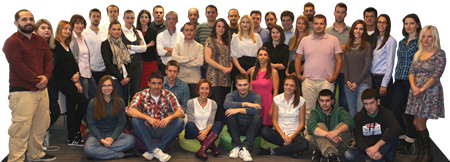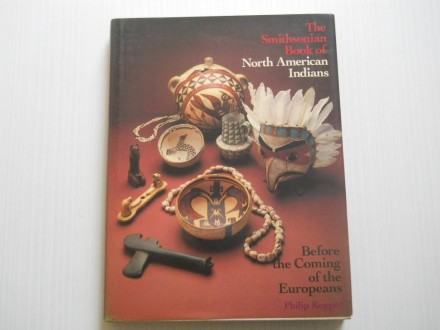The Smithsonian Book of North American Indians
| Cena: |
| Želi ovaj predmet: | 11 |
| Stanje: | Polovan bez oštećenja |
| Garancija: | Ne |
| Isporuka: | Pošta Post Express Lično preuzimanje Organizovani transport: 160 din |
| Plaćanje: | Tekući račun (pre slanja) PostNet (pre slanja) Lično |
| Grad: |
Smederevska Palanka, Smederevska Palanka |
ISBN: Ostalo
Godina izdanja: 1986.
Jezik: Engleski
Autor: Strani
The Smithsonian Book of North American Indians
Before the Coming of the Europeans
Philip Kopper
1st Edition
Smithsonian, 1986.
286 pages, Hardcover, A4.
Malo požutela od trajanja a inače, veoma očuvana.
From Wikipedia: The indigenous peoples of the Americas are the pre-Columbian inhabitants of North and South America, their descendants, and other ethnic groups who are identified with those peoples. Indigenous peoples are known in Canada as Aboriginal peoples,[21] and in the United States as Native Americans.[22] They are commonly referred to as Indians, Red Indians, American Indians, or Amerindians, but are also known by their specific tribal and cultural ancestry and citizenship. ~~~ According to anthropologists, Amerindians are Proto-Mongoloid people. Margaret Sleeboom-Faulkner of the Department of Anthropology at the University of Sussex said Kanz? Umehara considered the Ainu and some Ryukyuan to have `preserved their proto-Mongoloid traits`.[23] Proto-Mongoloid features can be found in most Amerindians,[24] and according to anthropologist Elsie Clews Parsons physical features of the `Proto-Mongoloid` were characterized as, `a straight-haired type, medium in complexion, jaw protrusion, nose-breadth, and inclining probably to round-headedness`. ~~~ Application of the term `Indian` originated with Christopher Columbus, who thought that he had arrived in the East Indies while seeking Asia. The name was still used as the Americas at the time were often called West Indies. This has served to imagine a kind of racial or cultural unity for the aboriginal peoples of the Americas. Once created, the unified `Indian` was codified in law, religion, and politics. The unitary idea of `Indians` was not originally shared by indigenous peoples, but many over the last two centuries have embraced the identity.[citation needed] ~~~ According to the New World migration model, a migration of humans from Eurasia to the Americas took place via Beringia, a land bridge that connected the two continents across what is now the Bering Strait. The most recent point at which this migration could have taken place, where the first Americans set foot on Alaska, is 40,000 - 12,000 years ago...
Indijanac, Indijanci...
Sva komunikacija se obavlja putem Kupindo poruka.
Pod `organizovanim transportom` smatram preporučenu tiskovinu ili paket (kada su kompleti i teže knjige).
Običnu tiskovinu ne šaljem jer nemam dokaz o slanju.
Novi cenovnik Pošte za preporučenu tiskovinu:
- 100g - 250g - 190 dinara
- 250g - 500g - 210 dinara
- 500g - 1kg - 230 dinara
- 1kg - 2kg - 270 dinara
Molim kupce iz inostranstva da me pre kupovine kontaktiraju porukom kako bismo se dogovorili oko uslova uplaćivanja i slanja.
Besplatna poštarina se ne odnosi na slanje u inostranstvo.
Pogledajte i ponudu na:
https://www.kupindo.com/pretraga.php?Grupa=1&Pretraga=&CeleReci=0&UNaslovu=0&Prodavac=anarh&Okrug=-1&Opstina=-1&CenaOd=&CenaDo=&submit=tra%C5%BEi
Ukoliko i tamo nešto pronađete, platićete preko istog računa i uštedeti na poštarini.
Predmet: 58266195













